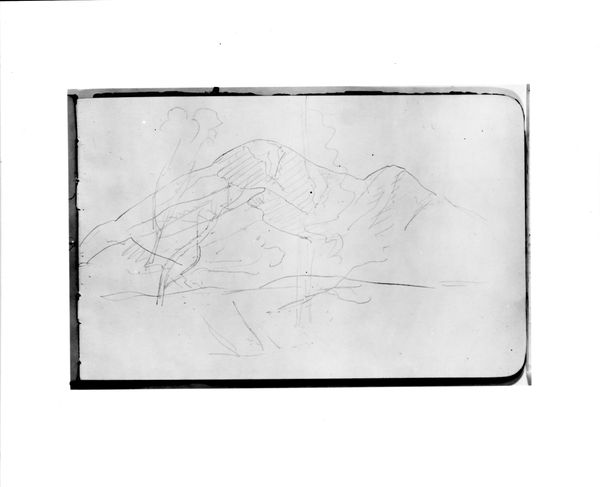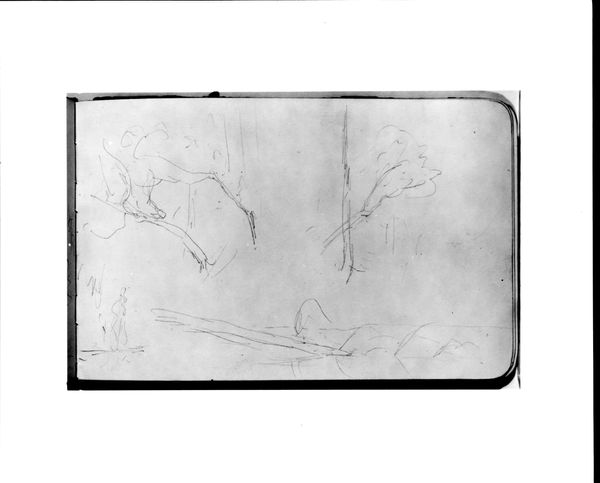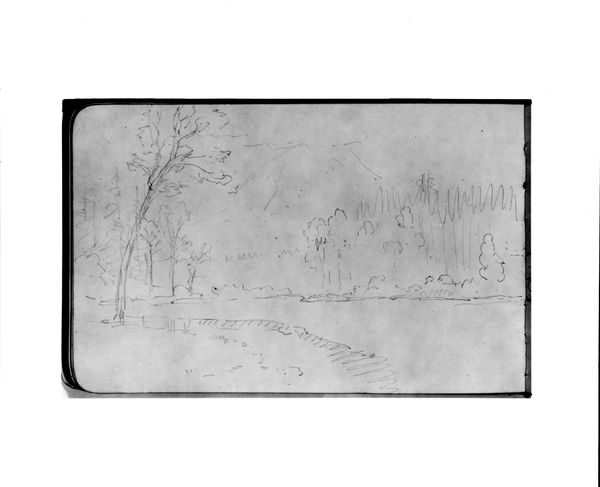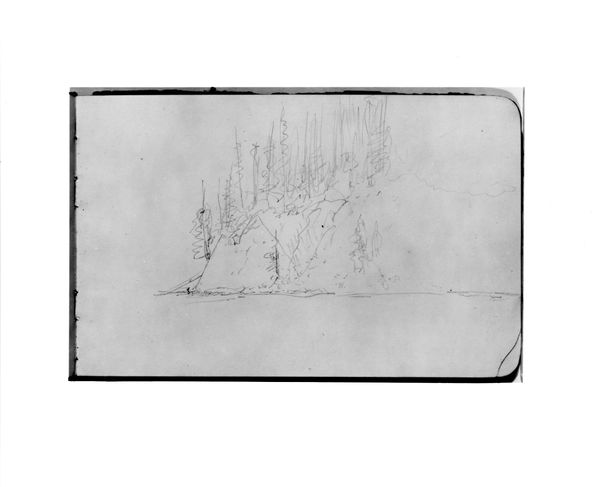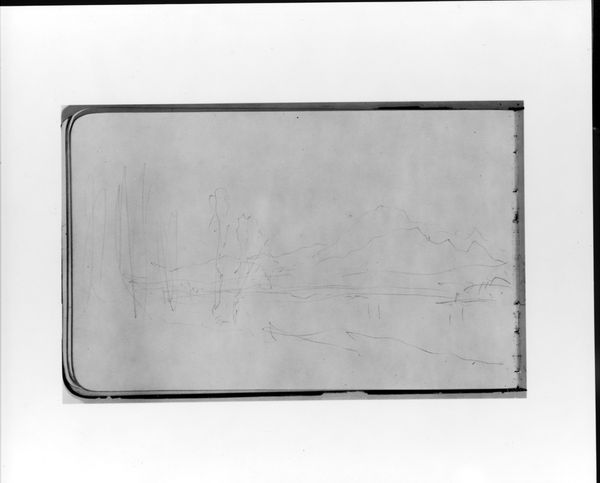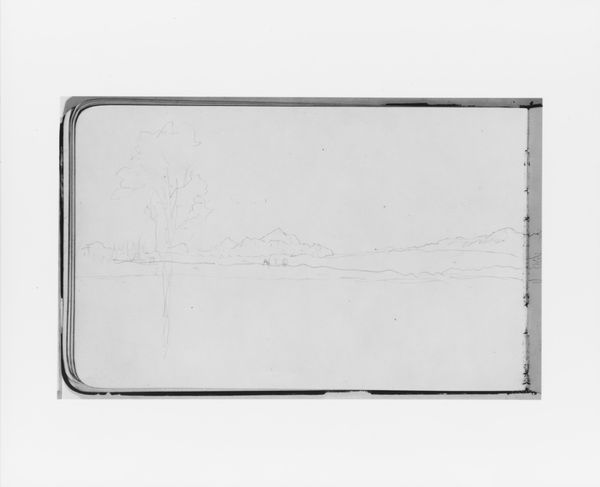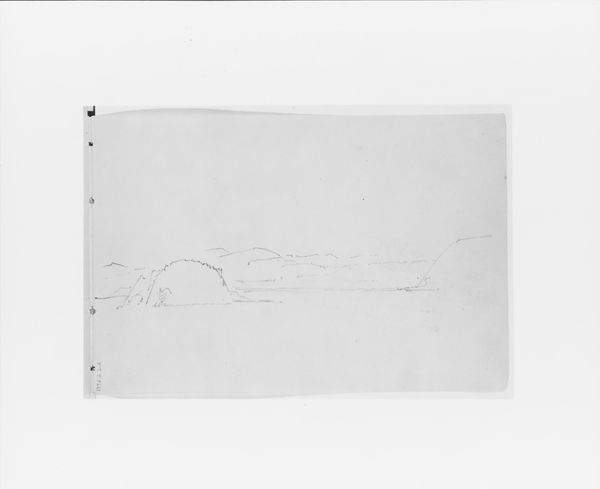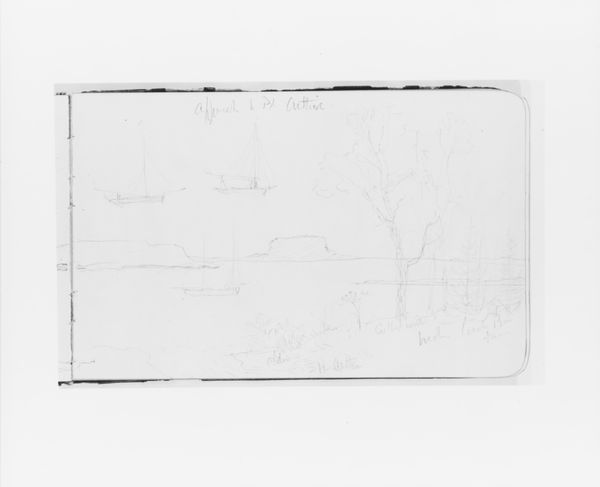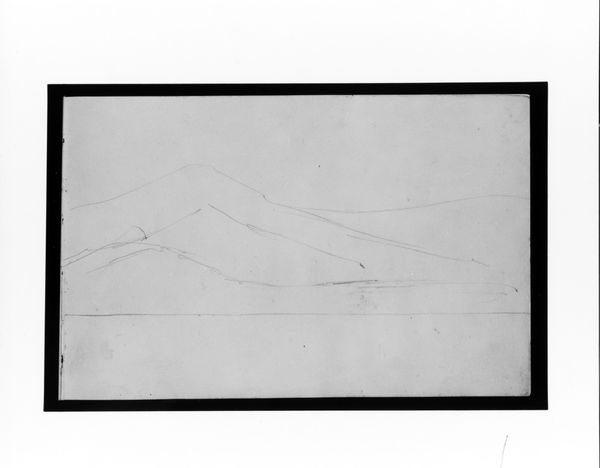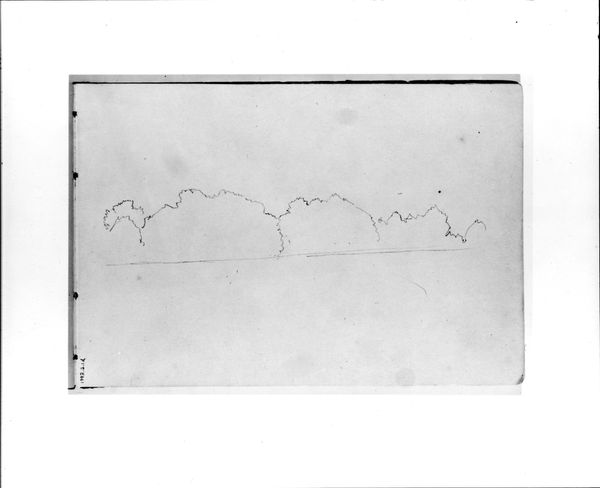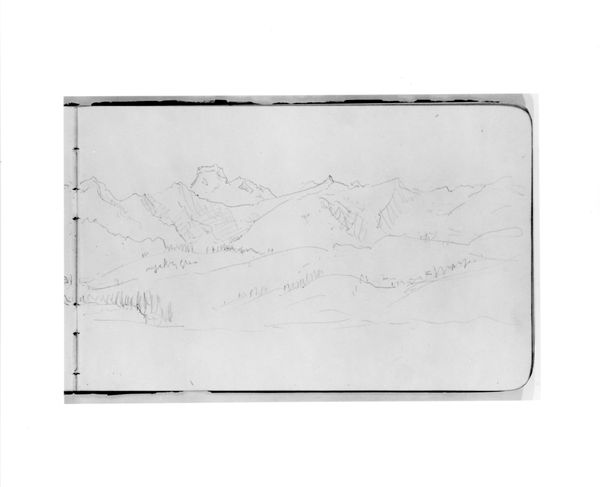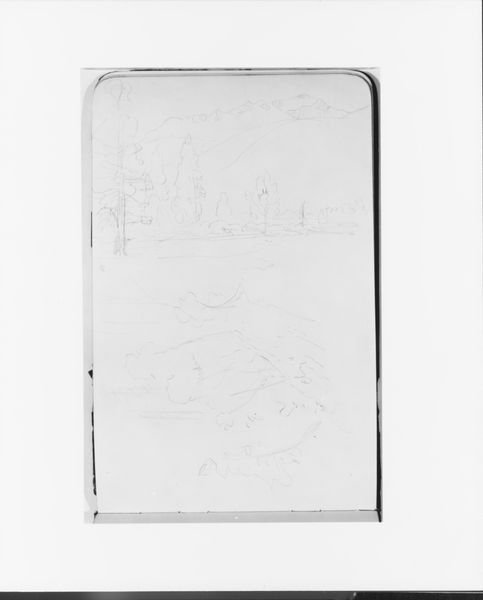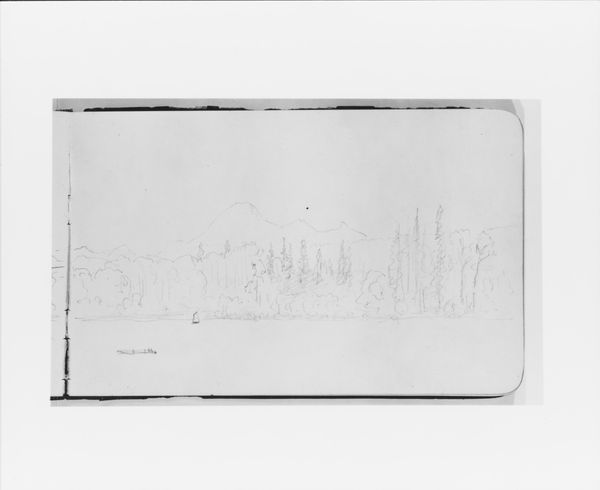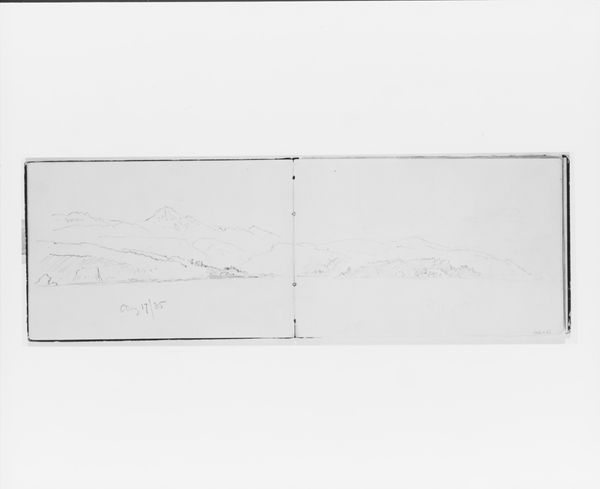
Dimensions: 4 3/4 x 7 3/4 in. (12.1 x 19.7 cm)
Copyright: Public Domain
Editor: Here we have Albert Bierstadt’s “Mountain Sketch (from Sketchbook),” made around 1890. It’s a delicate graphite drawing of a mountain range. I’m struck by the seemingly unfinished quality of the work; the lines are so tentative. What story does it tell you? Curator: I see a potent commentary on the Westward Expansion of the 19th century. Bierstadt, associated with the Hudson River School, often depicted grand, romanticized landscapes. But this sketch feels different, rawer. Considering the period, doesn’t it evoke the environmental cost of Manifest Destiny and the romantic perception of unsettled lands, reflecting both its allure and its potential destruction by settlers? Editor: That's an interesting way to look at it. I had initially assumed it was just a preliminary study. Could his incomplete style represent some kind of remorse? Curator: Precisely! The unfinished nature challenges the heroic narratives usually associated with Western expansion, especially considering how indigenous people were systemically dispossessed of land. We see how landscape painting contributes to the political discourses of its time. What questions might this sketch provoke in a modern viewer, someone grappling with current environmental issues? Editor: I see what you mean, it really prompts the viewer to reconsider familiar historical narratives, placing a fresh focus on environmental awareness. It is also making me consider the purpose and use of preliminary sketches. Curator: Exactly. So, the next time we encounter landscape art, let's remember to question not just what is depicted but whose voices and stories are missing or muted and what political perspective is assumed or imposed. Editor: This conversation gave me such a deeper appreciation for the work. Thank you!
Comments
No comments
Be the first to comment and join the conversation on the ultimate creative platform.
